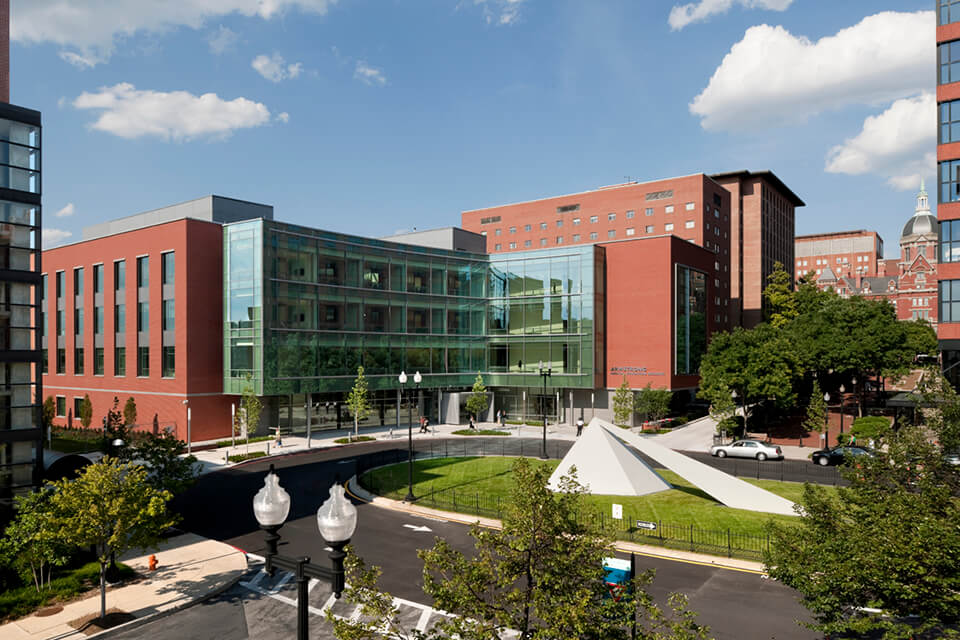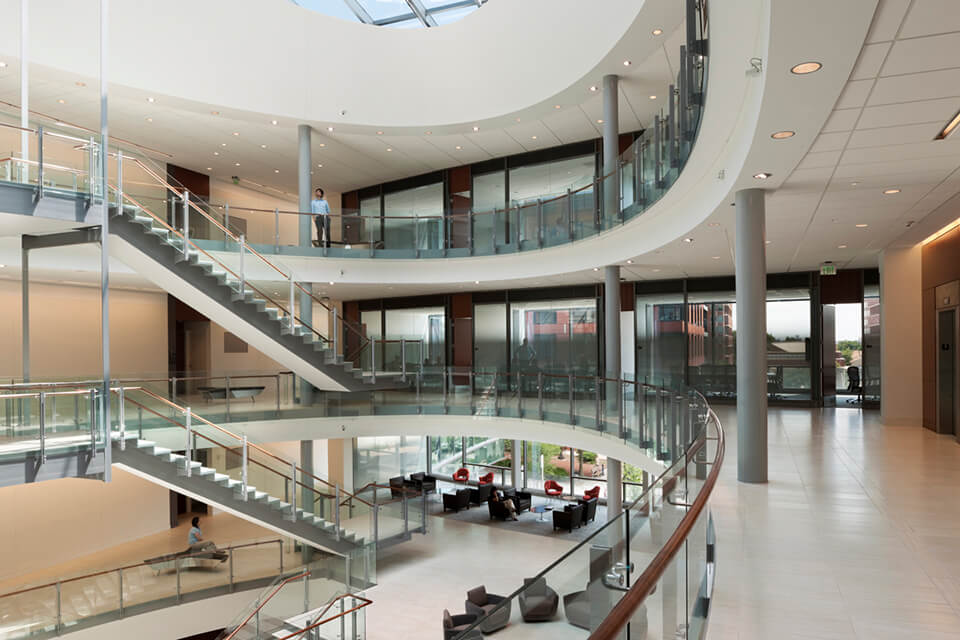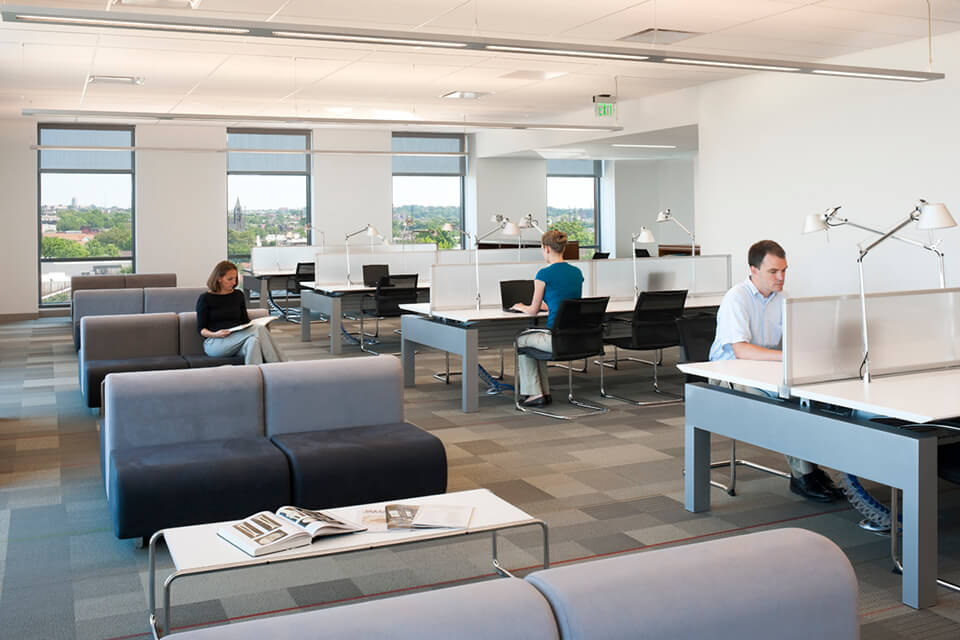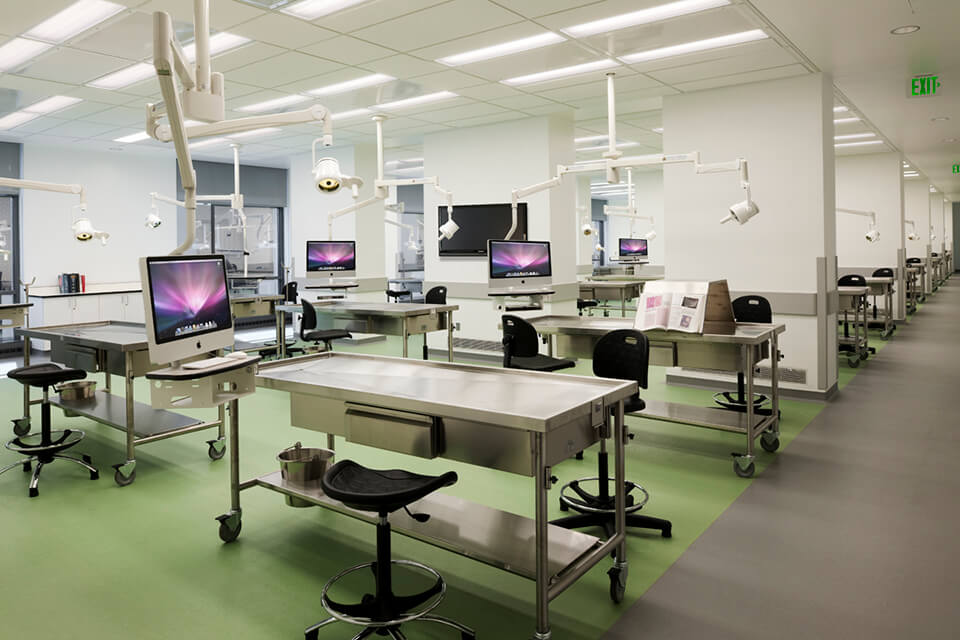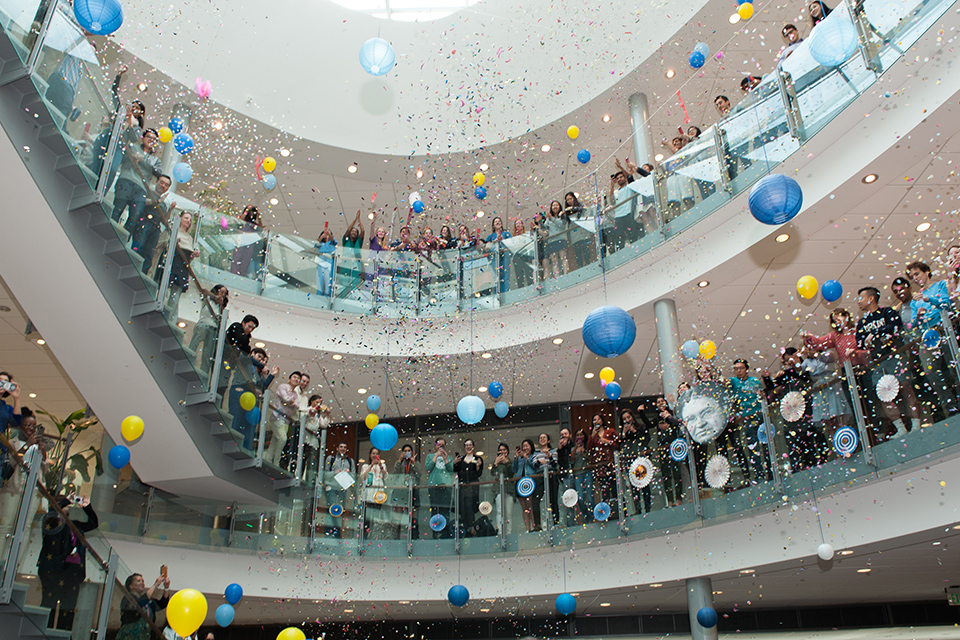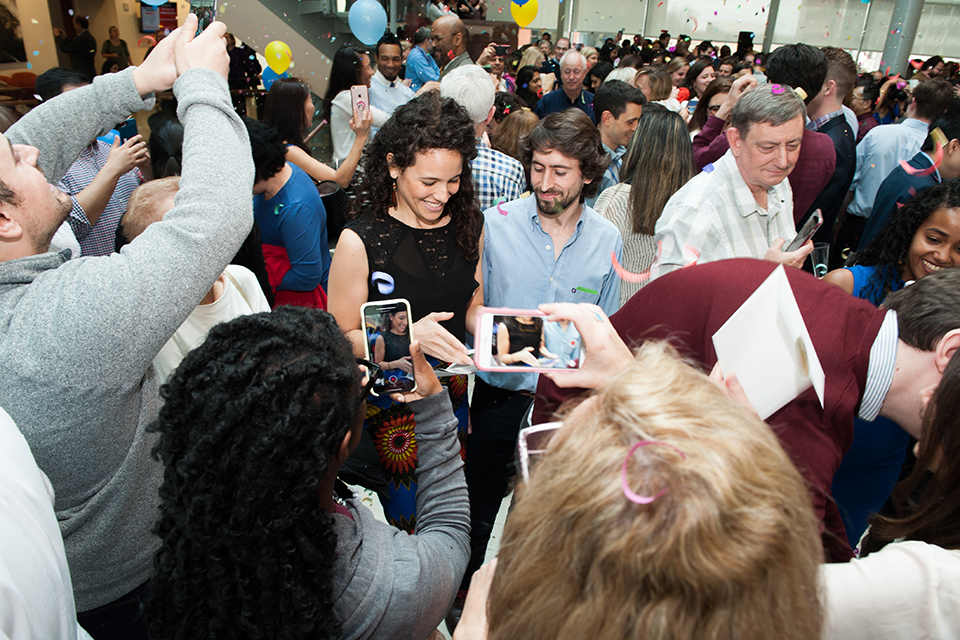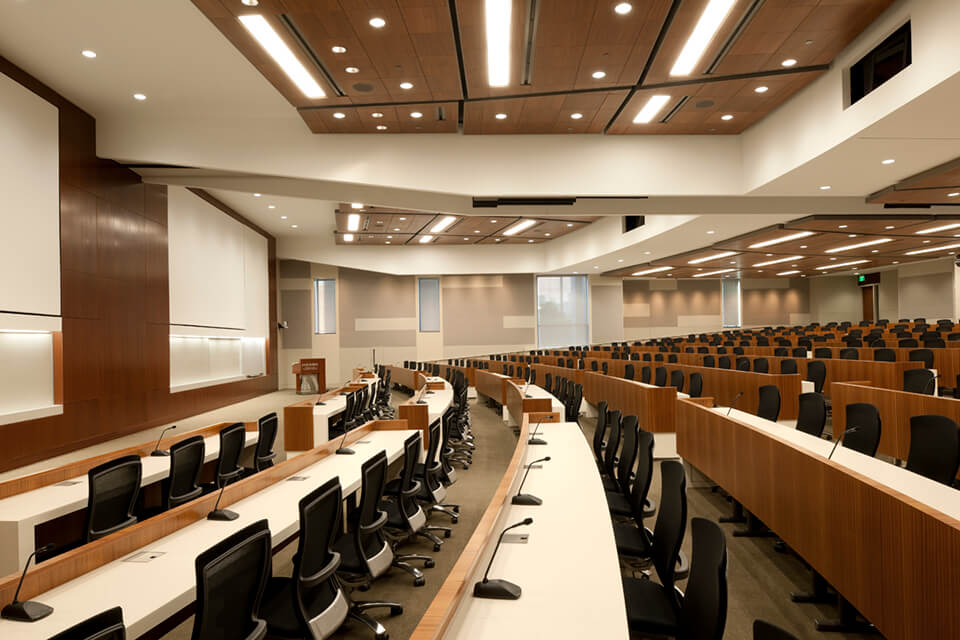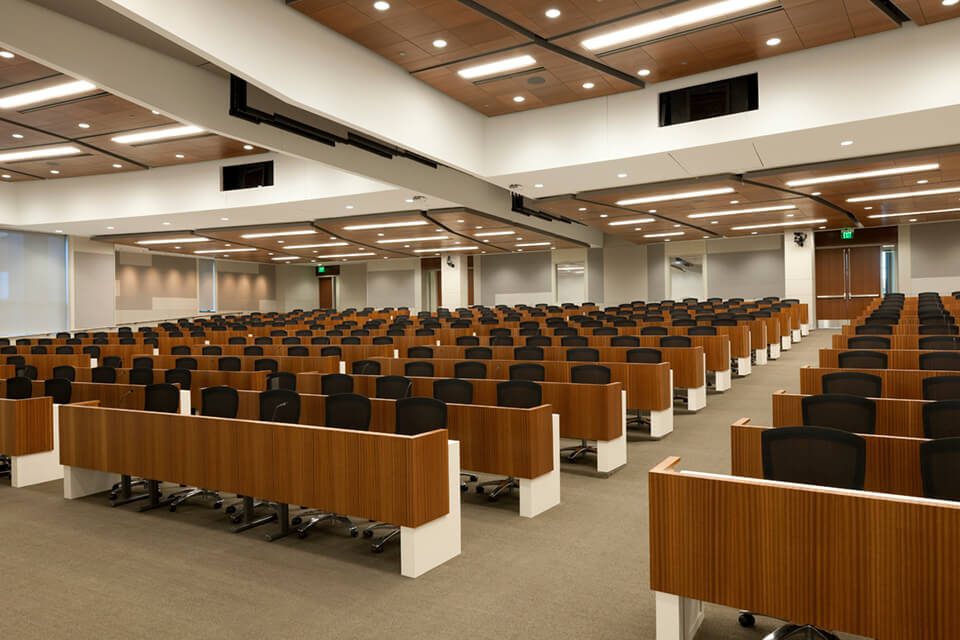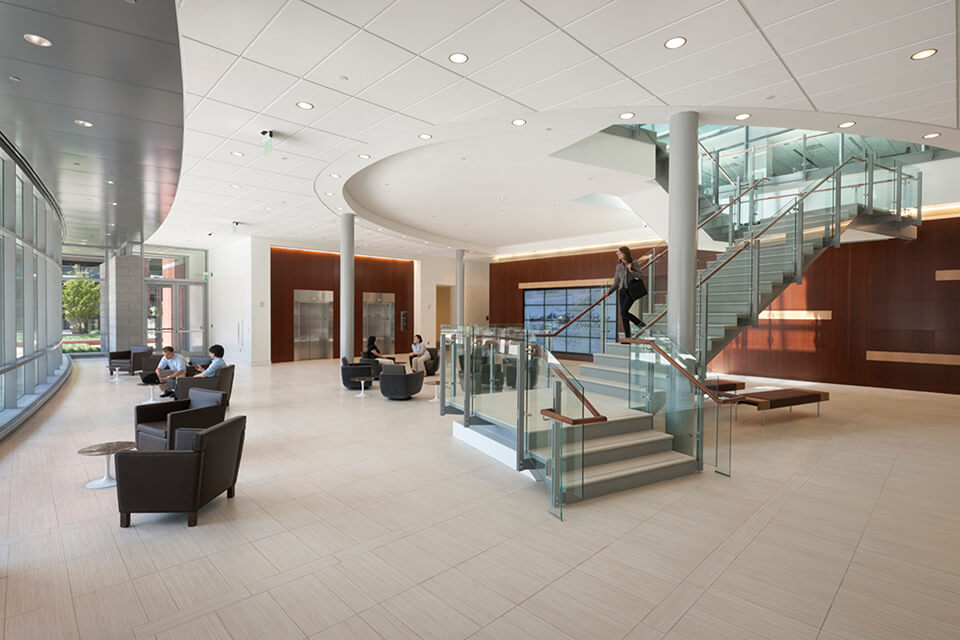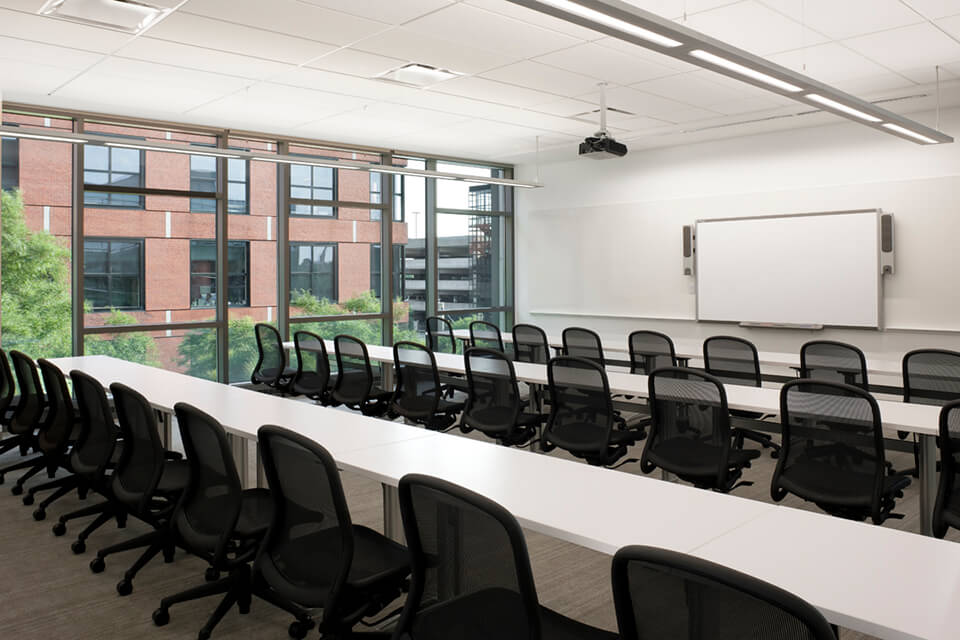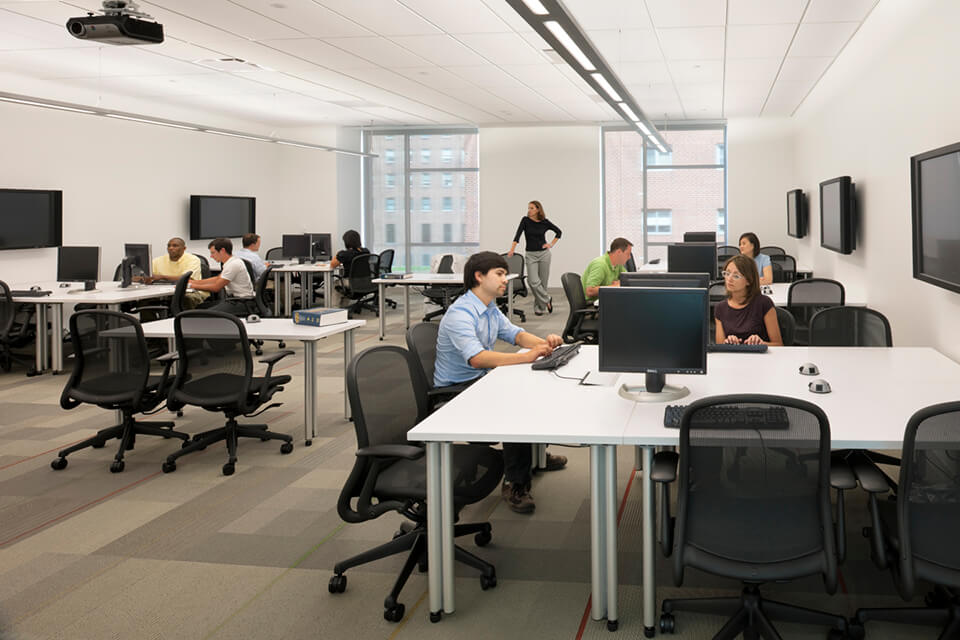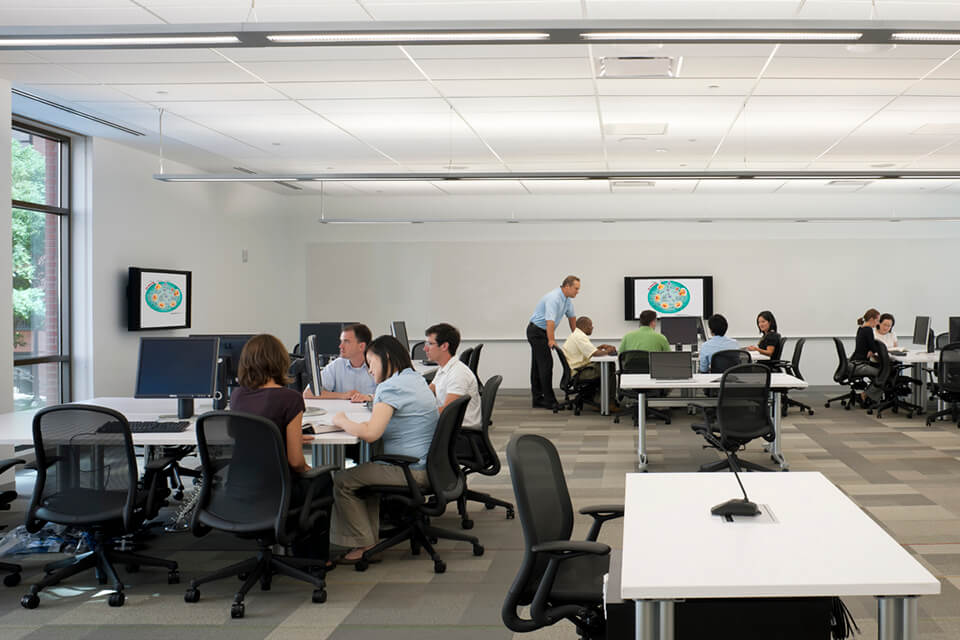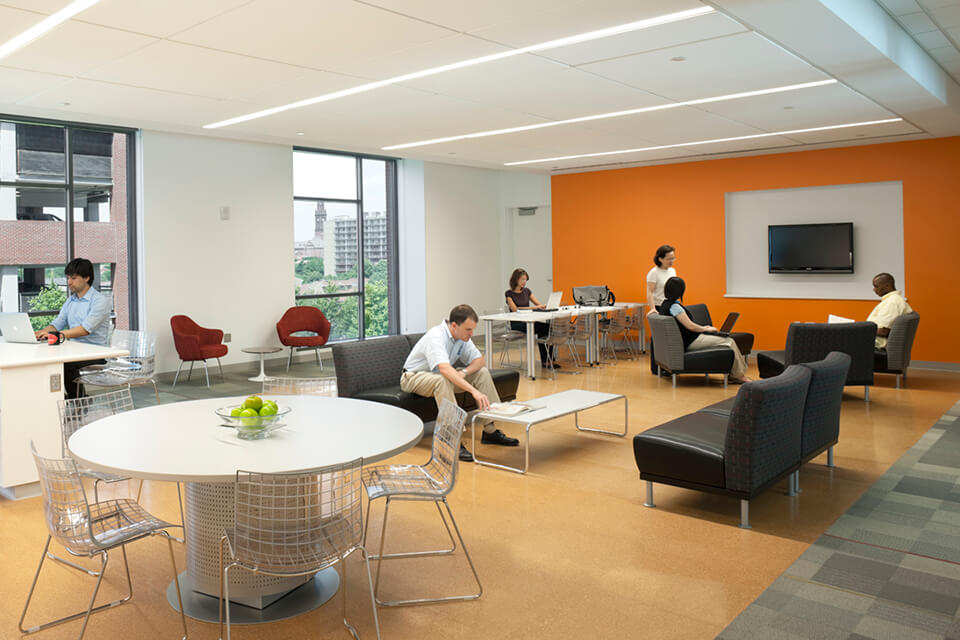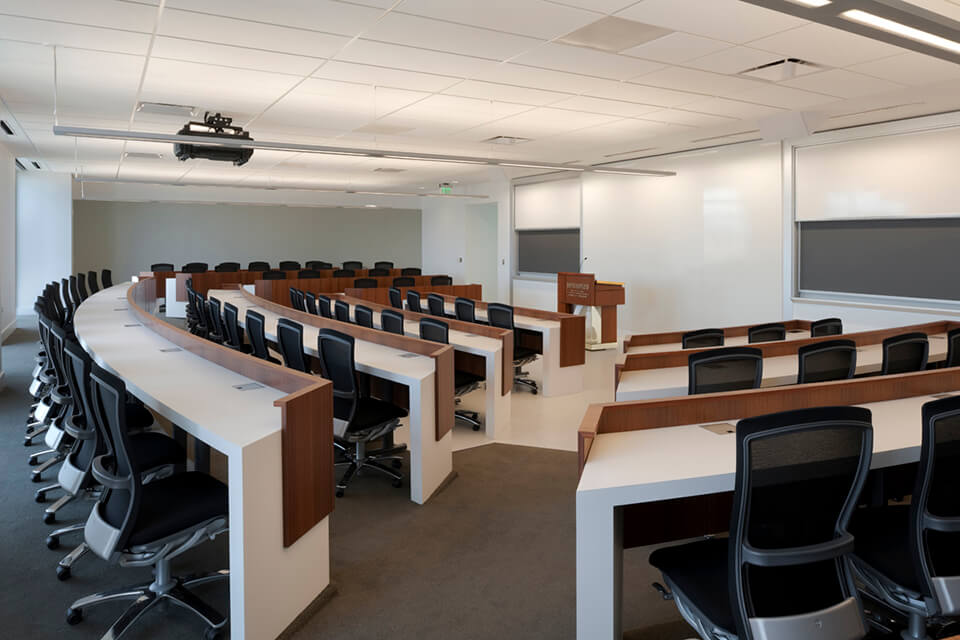The Campus Experience
How Genes to Society Curriculum Influenced Building Design
The medical school’s Genes to Society curriculum is based upon researchers’ ever-expanding understanding of the human genome. In an era where new genetic variations and their relationships to disease are being discovered every day, the new curriculum moves medicine into a realm where each patient’s disease becomes unique. Instead of studying “classic” cases in medicine, students will now learn how individual variation -- in biology, genetic inheritance, environmental factors and family life -- contributes to patients’ health.
Johns Hopkins has launched this bold vision of medical education in a state-of-the-art building specifically designed to support it. As the campus’s first new medical education center in 25 years, the Anne and Mike Armstrong Medical Education Building offers innovative classrooms with projection capabilities and mobile podiums for instructors. There are large lecture halls, intimate learning studios and private study areas. The building also features the latest digital communications technology, including virtual-reality simulations, MRI images, CT scans, surgical videos and other 21st-century reference tools.

